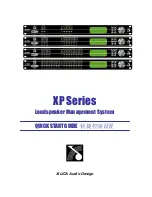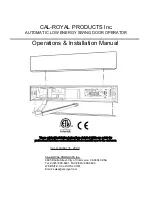
Manual 2100-721B
Page
34 of 54
23. MEASURING AIR TEMPERATURE
RISE
Air temperature rise (supply air temperature minus
return air temperature) must be within allowable air
temperature rise range specified on furnace rating
plate.
Two thermometers with 1
°
resolution capable of reading
up to 200
°
F will be needed. Check thermometers to
make sure they agree, or compensate accordingly.
Follow this procedure:
1. Open supply air registers and return air grilles.
Make sure the registers and grilles are free of
obstruction from rugs, carpets, drapes or furniture.
2. Set balancing dampers in supply duct system.
3. Check duct work for obstructions or leaks.
22. CONVERSION OF GAS INPUT BTUH
FROM HIGH TO LOW RATING
All the derated WG series units are produced with
maximum BTUH input orifices installed. To field
convert input, a change to main burner orifices is
required.
NOTE:
No change to air orifices is necessary. A set
of low input orifices is shipped with every
unit. They will be found packaged in a bag
behind the burner door. Refer to the unit
rating plate to confirm the proper orifice size.
Proper installation of the orifices is detailed as
follows:
1. Shut off electrical supply to the unit.
2. Shut off gas supply to the unit.
3. Remove burner access panel.
4. Disconnect gas valve from gas supply piping.
5. Disconnect the two wires from the gas valve.
6. Remove the manifold assembly so that orifices are
now accessible and remove orifices.
7. Apply a modest amount of pipe compound to the
new orifices and screw them into the manifold.
8. To assemble burner, reverse Steps 1 through 7.
4. Make sure filters are clean and in place.
5. Place one thermometer in supply air plenum
approximately 2' from furnace. Locate
thermometer tip in center of plenum to ensure
proper temperature measurement.
6. Place second thermometer in return air
duct approximately 2' from furnace. Locate
thermometer tip in center of duct to ensure proper
temperature measurement.
7. Set room thermostat on highest temperature
setting. Operate furnace 10 minutes. Record
supply air and return air temperatures.
8. Calculate air temperature rise by subtracting return
air temperature from supply air temperature.
• If air temperature rise is above the
temperature rise range on rating plate,
furnace is overfired or has insufficient airflow.
Check gas input following the instructions in
Section 20, “Checking Gas Input Rate”. If
air temperature rise is still above temperature
rise range specified, more heating airflow is
needed. Check duct work and grilles to make
sure all are properly sized.
• If air temperature rise is below the
temperature rise range on rating plate,
furnace is underfired or has too much airflow.
Check gas input following the instructions in
Section 20, “Checking Gas Input Rate”. If air
temperature rise is still below temperature rise
range specified, less heating airflow is needed.
Adjust dampers or grilles as needed.
• After making adjustments, check air
temperature rise to verify that resulting air
temperature rise is within allowable range.
If air temperature rise is still outside the
temperature rise range specified on rating
plate, check duct system design with a
qualified heating engineer. It may be
necessary to re-size the duct work. Recheck
air temperature rise after revising duct
systems.
9. Set room thermostat to desired setting.
10. Remove thermometers and seal duct work holes.
NOTE:
Failure to seal holes could result in reduced
system performance.
24. FILTERS
A 2" thick throwaway filter is supplied with each unit.
This filter is installed by opening the filter service door
(see Figure 16).
Replacement filters are available through the dealer.
WARNING
Failure to follow these instructions could
create a hazard resulting in property damage,
bodily injury, or death.
















































